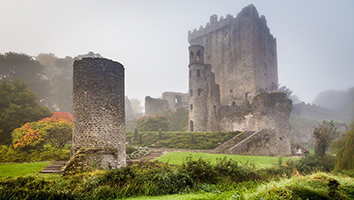https://en.wikipedia.org/wiki/Hayes_(surname)
In Ireland, Hayes originated as a Gaelic polygenetic surname “O hAodha”, meaning descendant of Aodh (“fire”), or of Aed, an Irish mythological god. Septs in most counties anglicised “O hAodha” to “Hayes”. In County Cork, it became “O’Hea”. In Ulster, it became “Hughes”, the patronymic of Hugh, an anglicized variant of the given name Aodh. Hayes is noted on a public record in County Wexford as early as 1182.
O’Hea is one of the anglicized forms of the very common Gaelic surname Ó’hAodha, which has at least a dozen different and distinct origins in Ireland and is usually anglicized Hayes, except in Ulster where it has become Hughes.
Ó’hAodha simply means descendant of Aodh, anglice Hugh.
The sept so named, which is located in Corca Laoidhe – I.e. the south-western part of Co. Cork – is the only one which is called O’Hea in English and this form is invariable in that area.
Murrough O’Hea was Bishop of Cork in 1205, and Maurice O’Hea was Bishop of Ross in 1559.
In County Cork only is the name found in directories to-day (apart from a few migrants to Dublin).
John Fergus O’Hea (1850-1912), artist and cartoonist, was a Cork man, and Captain William O’Hea, an officer in Nicholas Browne’s infantry in King James the Second’s army, was of Aghamilly Castle in Pobble O’Hea, a district retained by the sept under the overlordship of the Barrys.
In County Cork, under the Munster providence, Hayes falls under the banner of the McNamara clan in the Dalcassian Sept. The Hayes clan is also been known to hail allegiance to Clan Cian, the ruling O’Carroll clan, of southern Ireland.
This name, by the way, was also known as Heas which is identical in pronunciation with Hayes.
The name Hay (i.e Norman de la Haye) is on record in County Wexford since 1182.
It has now become Hayes in most places. Irish Hayes are almost invariably scions of one of the Ó’hAodha septs.
The most considerable of these was the Dalcassian sept of Thomond, now chiefly associated with Counties Limerick and Tipperary, whence came Catherine Hayes (1825-1861), singer, and the two painters Edward Hayes (1797-1864) and Michael Angelo Hayes (1820-1887).
In the seventeenth century the form O’Hea, not Hayes, was used in County Clare as is evidenced by the number of O’Heas in Petty’s census of 1659.
Woulfe gives no less than twelve distinct septs of Ó’hAodha, including, as well as those mentioned above, others located around Ardstraw (County Tyrone), Ballyshannon (County Donegal), Farney (County Monaghan), Navan (County Meath), Gorey (County Wexford), Ballintobber and Templemurray (County Mayo), Dromard (County Sligo) and one of the Ui Maine.
It seems there is not an active clan organisation for your name, at this time.
However, the revival of interest in Irish culture and heritage over the past 100 years has led to the revival of many Irish Clans. In more recent times, increased access to historical archives online, DNA testing and ease of travel to Ireland has led many individuals to explore their own genealogy and connections to Irish Clans. Some of these have gone on to establish Clan Associations in Ireland, the USA, the UK, Canada, Australia, New Zealand and anywhere that the Irish Diaspora has found itself.
Clans of Ireland Ltd invite those interested in Irish Clans to contact them with a view to explore the possibility of reviving your Irish Clan.

